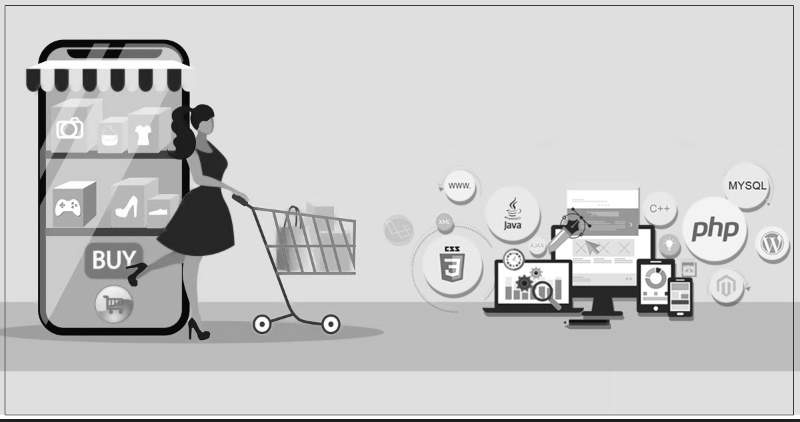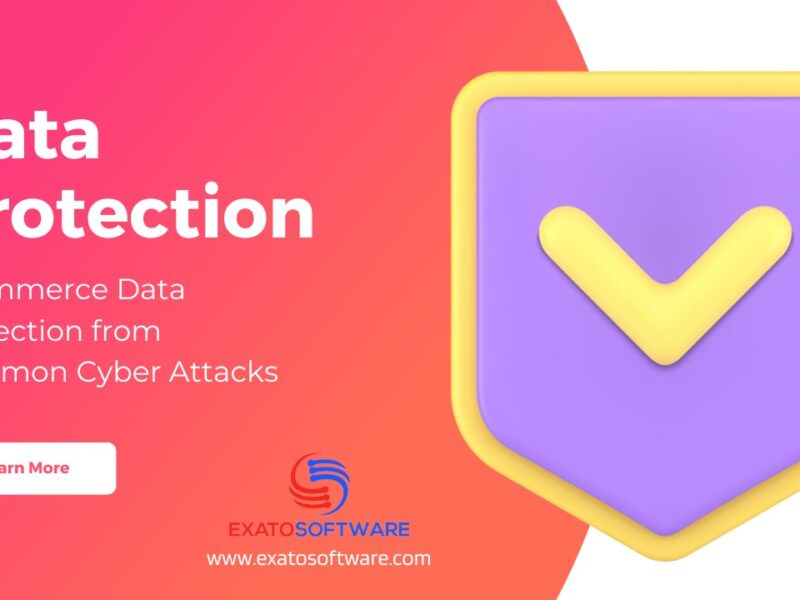What could possibly be more stressful than opening an online store? Leaving it undeveloped while your competitors continue to grow internationally. Yes, you might need to ruminate on ideas every day in order to keep up with your rivals, but every effort is beneficial. Ecommerce website development involves a lot of steps, such as finishing the website’s product catalog, choosing the design layout, improving the SEO, and advertising your brand. But until you genuinely decide to leave your comfort zone and engage in ecommerce website development, nothing is achievable.
We at ExatoSoftware Full-Stack Development Company in USA, UK, Australia, UAE, and India providing you with an ideal e-commerce website construction guide today, including every element required for the creation of a successful e-commerce store.
E-commerce Market Analysis and Statistics
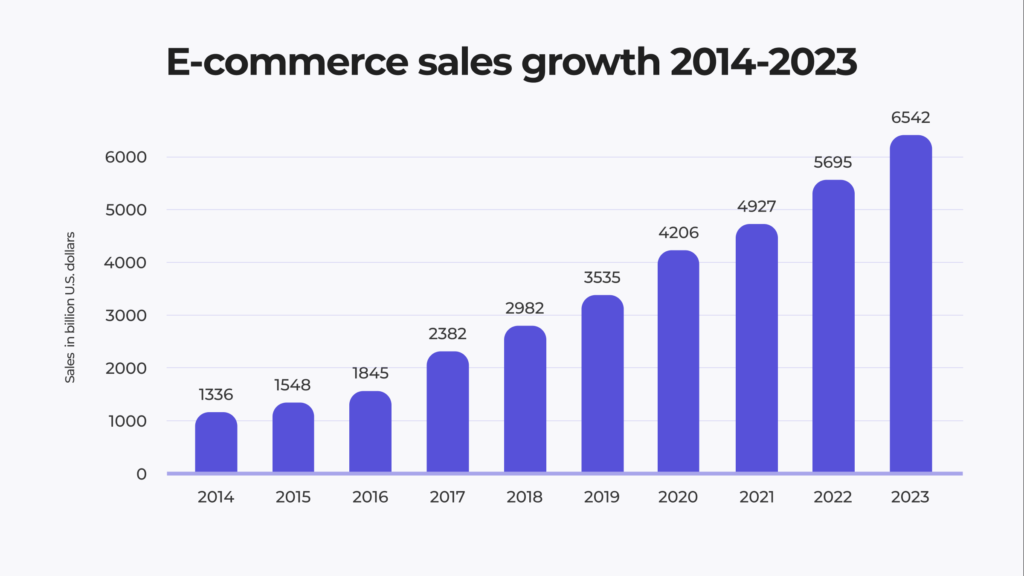
E-commerce has completely changed how business is done in India. The Indian e-commerce market is anticipated to grow from $36 billion in 2017 to $250 billion by 2026. Additionally, it may be argued that a rise in internet and mobile phone penetration is a major driver of the sector’s expansion.
India’s population of internet users is anticipated to increase from 603 million in FY19 to 865 million by the end of 2021 as a result of the nation’s continuous digital transformation. Although this is the case in India, e-commerce is also growing on a global scale.
Nowadays, business owners can easily start a company with little or no capital. Online transactions are predicted to make up 95% of all sales by 2040, showing that consumers are relying more and more on them. The popularity of digital purchasing is primarily due to its 24/7 accessibility.
Types of Ecommerce Website Development
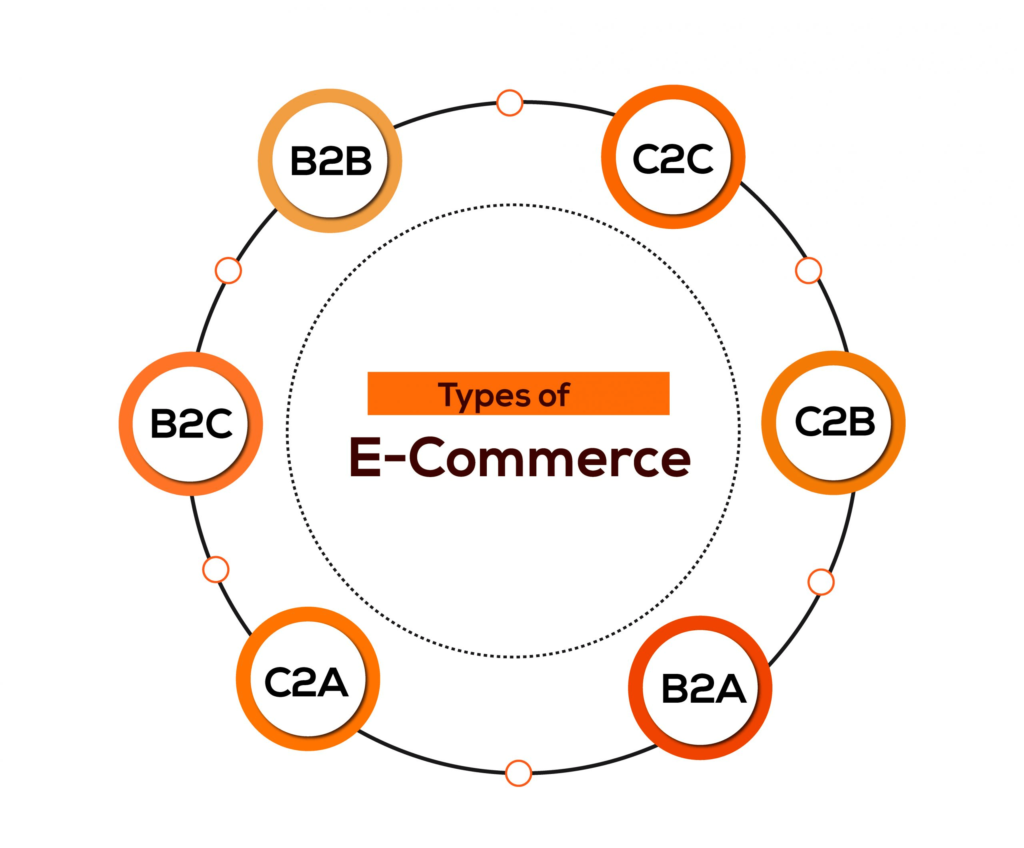
Business-to-Business ECommerce Website Development
B2B websites are those where businesses use an online sales channel to exchange goods and services. It is typically used to improve the effectiveness and financial performance of a company’s sales efforts. For instance, a machine maker might sell a woodworking shop specialized cutting tool equipment.
A well-known example of a business-to-business (B2B) online trade hub is Alibaba.com, where a variety of merchants can sell their goods. If your business offers B2B services, you ought to select a firm with expertise in B2B e-commerce website building.
Business-to-Customer ECommerce Website Development
Websites that enable business-to-consumer (B2C) e-commerce transactions fall under this category. An e-commerce website offers customers a similar shopping experience to that found in physical stores, but with the usage of an online catalog, the option to select products for purchase, and the capability to complete the checkout process electronically.
Amazon, Flipkart, and other specialized eCommerce sites allow different businesses to sell their goods and services to the general public.
Customer-to-Customer ECommerce Website Development
C2C e-commerce refers to online marketplaces where one individual sells goods and services directly to another customer. For instance, C2C e-commerce platforms like eBay and Etsy operate similarly. Typically, a marketplace—a third-party website that helps with managing the details of the transaction—is used to manage this sale.
Consumer-to-Business ECommerce Website Development
The C2B revenue model, another fantastic strategy, is well-known as a result of the platforms that link independent contractors. Here, independent contractors complete work supplied by clients. While the freelancers are frequently individuals, the majority of these clients are commercial entities. Simply defined, we think of C2B as a single owner that offers services to bigger companies.
Skills To Look For In A Professional ECommerce Website Developer
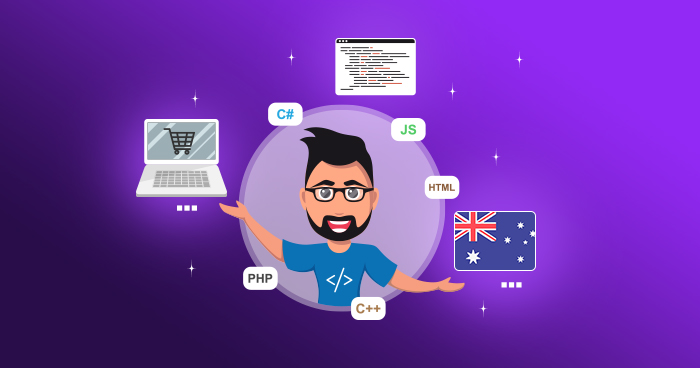
Web Designing Skills
A good web developer must be able to recognize the website’s basic elements, such as navigation, layout, space, color, and contrast when creating or redesigning an e-commerce website. To produce a result that engages and converts clients, these elements should be integrated harmoniously. Regardless matter how basic the design is, if done properly, you’ll have a beautiful website.
Effective Communication Capabilities
A web designer is typically the first person you will collaborate with. It is essential for a designer to be a skilled communicator and listener when assessing the project. If you are not extremely tech-savvy, web creation may involve the most complex technological nuances, which can be rather difficult. The developer should therefore be able to explain every detail to you in plain English.
Capability for Problem-Solving
Even if your communication with the developer was flawless and crystal clear, imperfections are inevitable. A web designer’s responsibility is to methodically adjust the design as necessary. Along the way, the website could experience technological issues, such as problems with administration, navigation, or integration. A talented developer should offer various development solutions and be able to pinpoint the fundamental issue from a variety of angles.
Updated With Cutting-Edge Web Technology
E-commerce site design concepts come and go, much like technologies. A good web developer should be familiar with all aspects of website design. They are able to do this by:
Credible sources like RSS feeds and blogs about web development.
Review the latest recent business news.
Recognize that there is always more to learn and that they do not know everything.
Expertise in Front-End Languages
A website developer works with the web programming languages HTML, JavaScript, and CSS. To evaluate which features are feasible and which are not, developers must gain a thorough understanding of these languages. This is done to avoid design blunders that can cause a launch delay.
Proficiency with PHP and MySQL
The most popular best web development technologies are available now maybe PHP and MySQL. While the latter is used to maintain database content, the former is utilized to build dynamic webpages. A developer may create almost any type of website—from a straightforward contact form to a substantial business portal—if they are skilled in both areas.
Expertise in Ecommerce
Ecommerce Website Development for informational purposes differs greatly from website development for online stores. There are various business decisions to be made along the road. Which payment processor does the client typically prefer? Is he more at ease using a credit card or cash on delivery? Do you need to install any additional third-party software? To maintain a smooth development process, a cloud migration developer or e-commerce developer must be aware of these possibilities.
Ecommerce Website Development Checklist
A challenging task is starting an online store. Many tasks require your dedication, and achievement is still elusive. However, this ambiguity is not a justification for delaying the opening of an online store.
The following is a checklist that encompasses every important element of setting up and running an online store, to help entrepreneurs plan their initial foray into the choppy waters of e-commerce.
Design and Layout of a Website
The fact that an e-commerce site has less than five seconds to grab a visitor’s attention should be obvious by this point. The layout and retail design are important factors in this problem. In this case, there are two simple recommendations:
Improve User Interfaces
The first point of contact between you and potential customers is how your store looks. You need to have a simple, lively, yet unobtrusive style if you want to be successful.
Jet.com is a great illustration of fantastic design. First-place placement of the most popular products is supported by discounts and special offers. When a user accesses the homepage, they may see right away which items are on sale.
Create a Flowing User Interface
The good news is that, aside from a few basic concepts, not much stands in the way of creating visually beautiful and unique user interfaces and shop layouts. This indicates that you can either display square boxes to represent store categories or a banner at the top. It’s all up to you!
Content Optimization
Without proper optimization, it will be difficult for your e-commerce company to appear at the top of the Search Results. There are two essential parts to storefront optimization:
Create Captivating Content
Creating aesthetically engaging content that interests your audience is crucial to successful e-commerce. A customer’s attention is immediately captured by statistics and graphics. Scope for presenting crucial data in attractive form shall be taken care of during eCommerce website development.
Organic Search Optimization
The next step in the process is to optimize the pages for higher search engine results rankings after they have been created. This frequently means changing the organization of the material, adding keyword phrases, and enhancing the pages with pertinent visual aids like images, videos, and infographics.
Product Description Pages
The action takes place on product detail pages, which receive a sizable number of visitors. The following 2 areas, which determine how successful these pages are, require caution:
Enhance Item Display
If it shines, it sells is a maxim in commerce, and specifically in online commerce. E-commerce stores MUST prominently display products with eye-catching images and descriptive copy. To help visitors make informed decisions, consider incorporating a price-time chart that shows the item’s price at a specific time.
Second, most significant internet merchants, like Best Buy and Newegg, now include a price comparison feature on their product pages, claiming that their pricing is the most affordable.
Visuals Aid in Product Sales
By providing numerous images of the goods, e-commerce website designers can improve the appeal of the product page. Additionally, video introduction evaluations provide the legitimacy of the product and aid the visitor in making a decision.
4. Checkout Process
According to numerous research, a checkout process’s complexity or latency causes more than 30% of users to abandon it. Another study by Kissmetrics found that the checkout process should not pressure customers to join up for anything during the payment process.
Make Checkout Easier
There shouldn’t be more than three stages in the entire checkout process. The process of creating an account can happen after the purchase and is not required.
Add Giveaways to Your Shopping Cart
Giving consumers presents is a successful strategy to get them to click “buy” rather than “return.” A $10 OFF coupon, for instance, can increase the number of repeat customers by helping people remember your store. special focus on making Shopping cart compelling to “Buy” shall be part of good eCommerce website development.
Support Pages
Many owners of e-commerce businesses are not aware of the crucial part support pages play in the general management of an e-commerce business. Many customers use these pages as their primary resource for learning about store return policies and other important information. When it comes to supporting pages, authorities advise:
Maintain Simplicity
Specific information regarding the process should be included in the privacy statement, exchange policy, and refund. To prevent clients from needing help from the help desk, make sure the instructions are easy to read and comprehend. Important details must be emphasized with bullets on these pages.
Integrating New Technologies
Many entrepreneurs are unaware of how technology breakthroughs like voice controls and VR technology are having a growing impact. These new technologies need to be a major part of the design of an e-commerce store.
Create a Mobile Application
Choosing a trusted and experienced mobile app development company that can assist you in creating a platform-optimized mobile application that provides a seamless user experience should be your objective as the owner of an e-commerce store.
Emphasize on Voice Search
Google estimates that 37% of people use voice search to conduct internet searches today. It cannot be avoided at all. This means that a key component of your SEO strategy should be to optimize your store for voice control. focussing on ths feature during eCommerce website development makes it easier and well-adopted.
Analytical and Tracking Capabilities
Simply because the topic seems irrelevant to the store’s commercial operations, many business owners ignore statistics and the monitoring of store data. However, these initiatives produce vital information for formulating plans.
Utilize Web Analytics Software
The best way to gauge the success of the store is via tracking tools. The tracking systems can keep an eye on foot traffic, customer behavior inside the store, and internet activity. Along with the percentage of page hits, Google Search Console can gather a range of data every day.
Cost of Ecommerce Website Development
There are two crucial expense categories regardless of the kind of website you want to create, from a feature-rich e-commerce storefront to a straightforward WordPress site:
Functionality and Design: – Customers that visit your website, use your product, and make a purchase see that.
Infrastructure – These are the many expenses related to setting up and maintaining an online store that could be hidden from your audience. such as purchasing a domain, setting up servers, and improving the SEO of your website.
You’ll learn that there is no set price for eCommerce website development as we break down the cost of an e-commerce website. However, the anticipated cost can be determined by taking into account the following factors:
Domain Name
Without a domain name, eCommerce website development is not possible. Make a thoughtful choice in case of your e-commerce site’s registered address. Typically, domain names purchased from registrars like Namecheap or GoDaddy cost $5 to $20.
Hosting
Your online company’s basis is provided by the hosting service. Making your services available to customers around-the-clock requires investing in a reputable hosting company. You have two fundamental choices:
• Host your e-commerce website on a separate server.
• Use an online shopping platform like Shopify.
Prices vary depending on the company and the package, but independent hosting plans cost between $10 and $25 per month. The price range for Shopify hosting plans is from $29 to $399.
Personalized Web Design
A custom design is a great choice if you want to give your e-commerce website a distinctive and eye-catching appearance. It is customized to your company, market, region, and requirements, to make sure the outcome is up to the standards.
Depending on the size and intricacy of the project, the price could change, but you can plan on paying between $500 and $5,000. Additionally, the price would undoubtedly be higher than $5,000 to $50,000 if you required an enterprise-level design with an endless number of internal pages, such as those for products or categories.
Web Development
There is a thin line separating development from design. The physical organization of the website is its “design.” When someone visits your online store, they see it right away. But along with development come a variety of services and support, some of which work behind the scenes to keep your website operational.
Make sure the web development business or the e-commerce developers you hire have a lot of experience with e-commerce websites. Rates change depending on the experience level, platform, nature of the task, and location. At the low end you will pay between $5 and $20 per hour at the low end.
Search Engine Optimization and Marketing
Even if you design the finest e-commerce website ever, it will be useless if no one visits it. You require people to go to your website, engage with your company and spread the word about their positive interactions. SEO and marketing are useful in this situation.
It comes into one of those cost categories. However, you may always work with a digital marketing agency to help you promote your online store. The monthly cost ranges between $100 and $200 mostly.
Conclusion
In 2023, starting an e-commerce business is not difficult, but it will take more time than in the previous decade. Therefore, give it time. Make an attempt, fail, and then try again to succeed. We hope that this blog helps you on your road to success! For more discussion in detail, and wish to run a successful eCommerce Business hire dedicated ecommerce developers from ExatoSoftware Full-Stack Development Company in USA, Australia, UAE, UK, and India.

